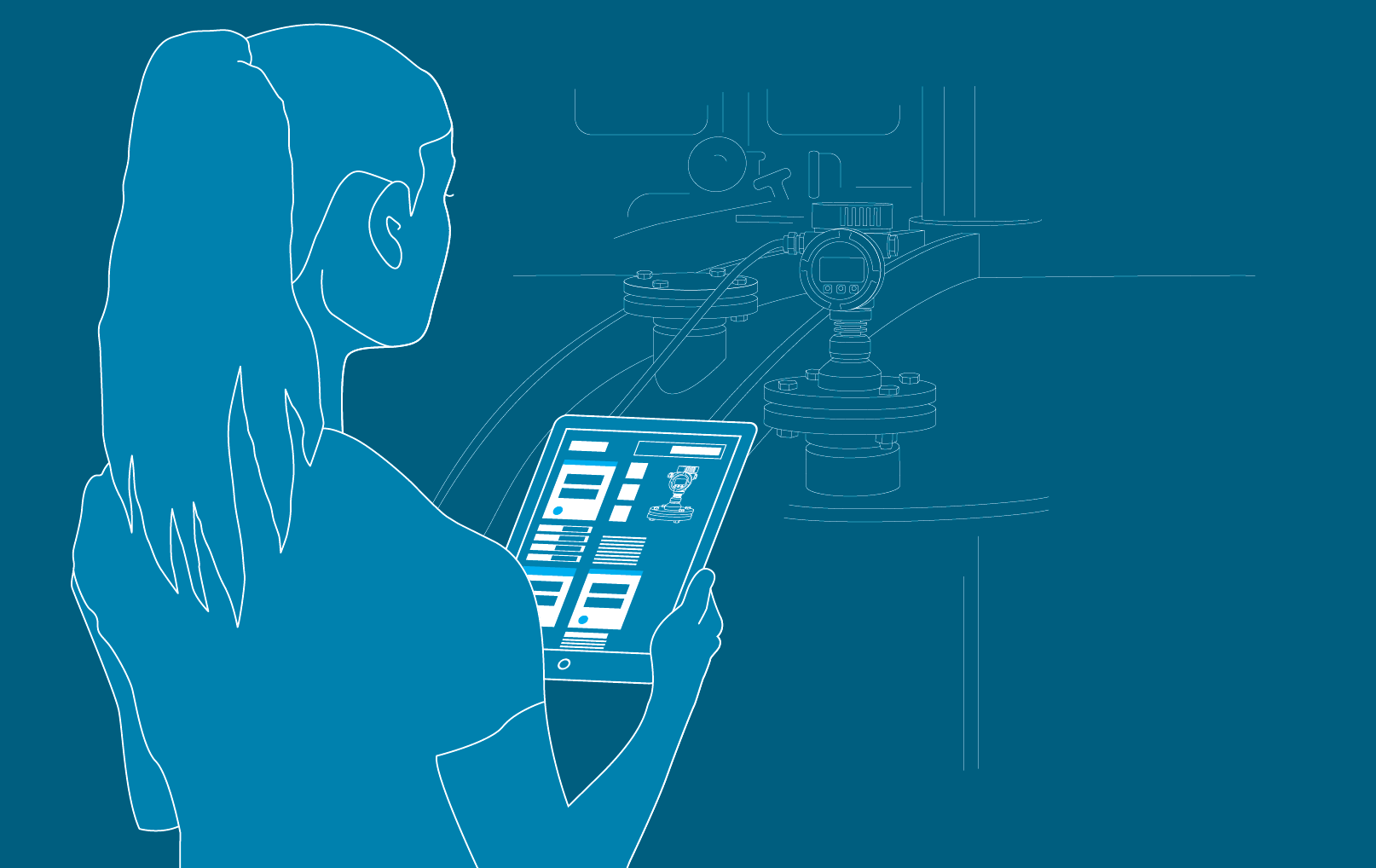A virtual friend for life
A digital twin is the virtual likeness of a real-world object. Underlying that likeness is a wealth of data and algorithms that can be used to simulate aspects such as installation and functioning. But Endress+Hauser’s vision goes further: the goal of a digital twin is to offer added value for customers across a product’s entire life cycle.

Up until just a few years ago, customers selecting components for their plants had little choice but to pore over thick catalogs, extract huge volumes of technical data from tables and compare documentation supplied in varying formats. When it came to operation, documents for certification and testing, maintenance and security checks were produced, updated and filed by hand. It was a labor-intensive and time-consuming process. Now, with the digital twin approach, Endress+Hauser is moving all of that into the virtual world. “By doing this, we simplify handling for customers and increase efficiency across a product’s entire life span, from selection, ordering and commissioning to service and maintenance and through to replacement,” explains Franz Durmeier, a marketing expert for Endress+Hauser’s digital portfolio.
Early on when planning a new plant, customers will select the right sensor from Endress+Hauser in a simple, convenient process using an online configuration tool where they can enter their requirements and use the digital twin to simulate installation and functioning. Then, when the order is placed, product information such as type and model number will be communicated in a format that is readable by the customers’ enterprise management software. Electronic guides and specifications accessible online from anywhere in the world will make it easier to install, calibrate and commission the measuring instrument. Certificates and checklists provided automatically will accelerate technical acceptance and testing procedures, since all of the documents needed will have been prepared in compliance with standards and will be readily available for inspection. During the service and maintenance phase, dynamically updated digital service schedules will support life cycle management for the device. Service needs will be flagged early on and maintenance can be assigned automatically. This will ensure a long life span and minimizes risk of instrument downtime. When a sensor is nearing the end of its life, customers will be offered the replacement that meets their needs.
To create the digital twin, Endress+Hauser’s IT systems translate all of the information relating to the specific measuring instrument – design data, guides, certificates, other technical documentation – into data sets that easily slot in to the customer’s digital ecosystem. Depending on the customer’s preference, the IT structure can also encompass the Netilion cloud from Endress+Hauser or another cloud solution. “The advantage of our cloud is that its configuration is aligned to the process industry. It offers direct access to all product documents, so customers can benefit from a digital twin without investing a lot of time and effort,” explains Kevin Rueff, Digitalization Product Manager at Endress+Hauser.
To ensure smooth integration into other cloud and IT systems, Endress+Hauser participates with other companies and industry associations in international committees working on standardizing data interfaces. The goal is to establish a software structure with what is known as an asset administration shell: a standardized, universal container that can be filled with as much information as required. “Hence we have the foundation for smart systems that can be seamlessly integrated into concepts such as Industry 4.0,” says Durmeier. This also includes constantly updating and expanding data sets for the digital twin. His takeaway? “We’ve seen that customers’ requirements are constantly evolving. The digital twin will always be a work in progress.”
Published 06.03.2023, last updated 14.11.2023.
Dive into the world of the process industry through new exciting stories every month with our «changes» newsletter!









